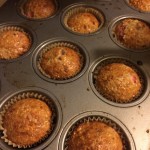![]()
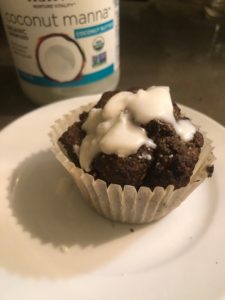 Some protein-packed holiday cheer for you in this recipe – gingerbread protein muffins! There are lots of options in the notes (at the end) for these muffins so that you can customize them to best fit your personal needs and pantry stock.
Some protein-packed holiday cheer for you in this recipe – gingerbread protein muffins! There are lots of options in the notes (at the end) for these muffins so that you can customize them to best fit your personal needs and pantry stock.
Because protein powders vary soooo much, please check the notes or send me a question if you’re not sure about your specific powder. I really recommend baking with pea or brown rice protein, and I also recommend using a kitchen scale if you’re trying to impress someone with these muffins and you want to make sure they come out fluffy and not like hockey pucks or pudding cakelettes.
Need supplies?
- My favorite (inexpensive and usually available for 2-hour delivery!) silicone muffin liners that I use for baking, snack plates, chocolate molding…
- This ceramic nonstick muffin pan doesn’t even need muffin cups. Mine looks a little scratched up after five years of use but it is still nonstick (and in a healthy way)
- Two hour delivery on my fave molasses
- GET YOURSELF A KITCHEN SCALE please
- Coconut manna – my secret to glazes without powdered sugar
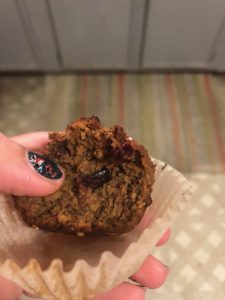 Makes just 6 muffins – double this recipe for a full dozen if you’d like, but I think these taste best if eaten within a day or two of baking. I don’t love them after freezing and thawing – high protein products can get crumbly, but you could always eat it over yogurt!
Makes just 6 muffins – double this recipe for a full dozen if you’d like, but I think these taste best if eaten within a day or two of baking. I don’t love them after freezing and thawing – high protein products can get crumbly, but you could always eat it over yogurt!
HeyI Your serving size is probably at least two-three muffins for a meal. As written, this recipe clocks in at 125 cal per muffin: 7g carbs, 7g protein, 8g fat.
Ingredients
- 1 egg or 2 tablespoons chia seeds + 2 tablespoons water (30g seeds + 30g water)
- 2 tablespoons blackstrap molasses (40g)
- 1/4 cup applesauce or canned pumpkin puree (more on this in the notes) (about 60g)
- 2 tablespoons oil (I like olive oil – you won’t taste it, plenty of polyphenols…coconut or avocado oils are also good choices) (28g)
- 3/4 cup almond flour (85g)
- about 3/8 cup protein powder (3 scoops-ish) OR enough of your kind of protein powder to reach 30 grams of protein (more on this in the notes)
- 1.5 teaspoons baking powder (see note about fruit/veg purees) (6 g)
- 1 teaspoon ground cinnamon (3g)
- 1 teaspoon ground ginger (or up to 1 Tablespoon grated fresh ginger) (5g)
- 1/2 teaspoon ground cloves (1g)
- a few grinds of black pepper
- pinch of salt
- 1/2 teaspoon apple cider vinegar (3g)
- optional: add-ins like dried cranberries, chopped walnuts, hemp seeds, more chia seeds, etc
- optional: 2 teaspoons sugar for sprinkling (8g)
- optional: coconut butter (manna) for topping
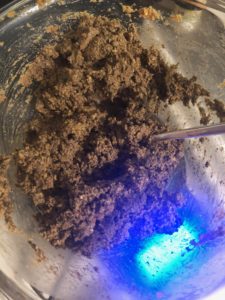 Method
Method
- Preheat oven to 350 F. Prepare muffin tin with papers, oil, silicone liners, etc.
- Mix the wet ingredients well: egg, molasses, and oil or puree.
- Add in the remaining ingredients and stir until fully incorporated. The batter will have the texture of mashed potatoes – that is not a mistake! Welcome to gluten-free baking.
- Optional: Add in any mix-ins: dried cranberries, seeds, nuts…just make sure you adjust your nutrition stats accordingly.
- Add the apple cider vinegar to help activate the baking powder and ensure a higher rise.
- Optional: Sprinkle the top of each muffin with sugar for a nice presentation.
- Portion into prepared muffin tin and bake for about 23-28 minutes (muffins with puree will take longer to bake than those with oil or ground flaxseed). Fully baked muffins will pass the toothpick test (no crumbs when a toothpick is inserted into the middle of the muffin).
- Optional: Top with coconut butter glaze if desired. Return the muffins to the oven for 30 seconds to allow the coconut butter to melt if your butter is solid when you place it on the muffins.
- Cool in muffin tin for 10 minutes, then remove and allow to cool. If you’re hasty, they’ll be crumbly. ENJOY
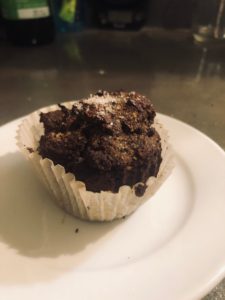 Notes
Notes
- You can use any fruit or veggie puree you’d like, or even use grated zucchini or freshly chopped apples. If you’d like an oil-free muffin, omit the oil and add an additional 1/4 cup of fruit/veggie puree, and an extra 1/2 teaspoon baking powder.
- I like using unflavored or vanilla pea, hemp, egg white, or brown rice protein in this recipe because it’s inexpensive and doesn’t dry out the texture the way whey does (and the spices cover the non-flavor of these proteins). When I made these muffins originally with pea protein, I used 3 scoops (about 45g of powder, 33g of which was protein). Next, I tried them with hemp protein and a higher overall protein content so I added a full 90g of powder, 45g of which was protein, and I had to bump up the liquid content of the batter slightly but the muffins came out just fine (they’re the ones in the photos!)
If you use flavored protein or a protein blend, that will affect the flavor and texture of your muffins. I think vanilla protein can hide in most baked goods, but I would be hesitant about baking with most all-in-one protein blends (and sad to use protein powder that’s $3/serving for baking when protein that’s under 50 cents a serving exists for this purpose).
If you use whey protein, check the muffins for doneness at about 18 minutes. Your muffins may also look shiny – that’s normal.
- You can omit the spices and molasses, add 2T agave, maple syrup, honey, or sweetener of your choice, and use this recipe as a base for other protein muffins. Blueberry, cinnamon, pumpkin, chocolate chip…do what you love, and adjust your recipe’s macros accordingly.
- If you’d like a higher protein/lower carb muffin, try any of these:
- omit the fruit/veggie component and sub in 3 tablespoons ground flaxseed mixed with 3-5 tablespoons water (start low – you can always add more)
- swap out the sweetener for stevia (I would use 3-4 packets of stevia in the raw for this recipe; your stevia may vary!) or another non-caloric sweetener.
- add 2 more scoops (20-30g) more protein powder and drop the almond flour down to just 3/8 of a cup. The texture will change, but you’ll get 4-5g more protein per muffin.
- If you’d like a higher protein/lower carb muffin, try any of these:
- If you use a kitchen scale, all you need is your scale, a bowl, and a mixing spoon! No more measuring cups or spoons – just add your ingredients one at a time to the bowl, following the recipe, and re-tare the scale as needed. I love the convenience and accuracy of cooking with a scale rather than measuring with scoops and spoons, and I wish I hadn’t waited so long to convert.
Happy baking! I know that was a lot of notes, but I hope this recipe will help you feel more confident in experimenting with protein substitutions in some of your favorite baked goods if that would help you better reach your macros or manage your blood sugar. (Not a doctor, just a personal trainer, not medical advice.)

